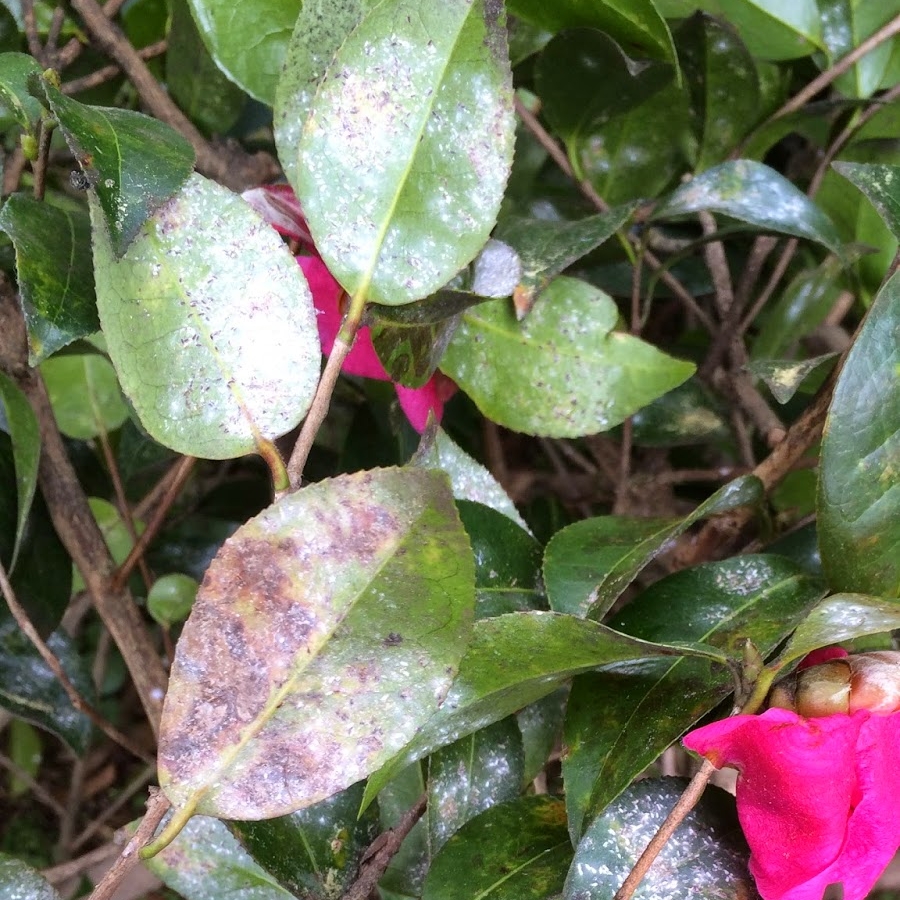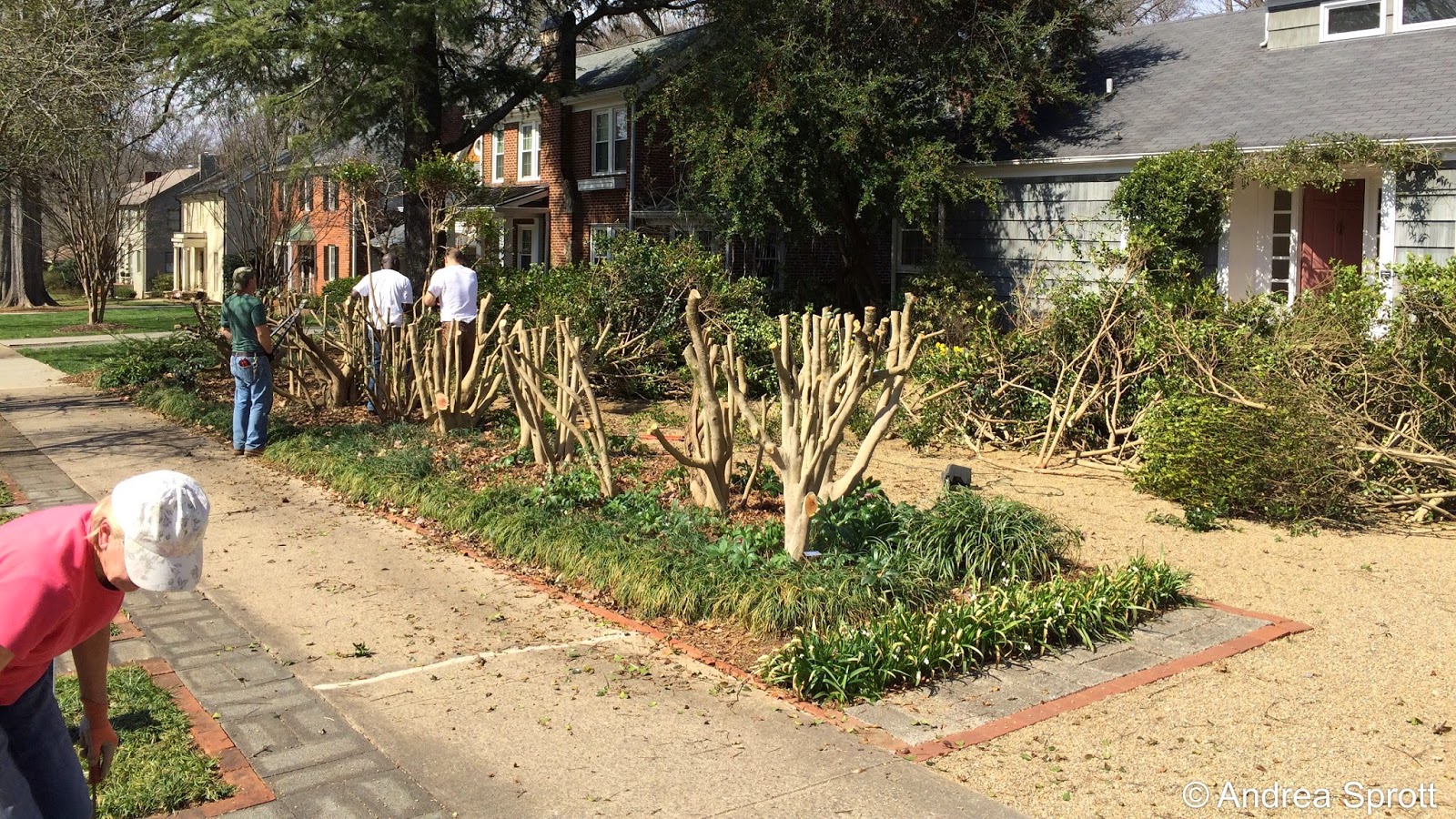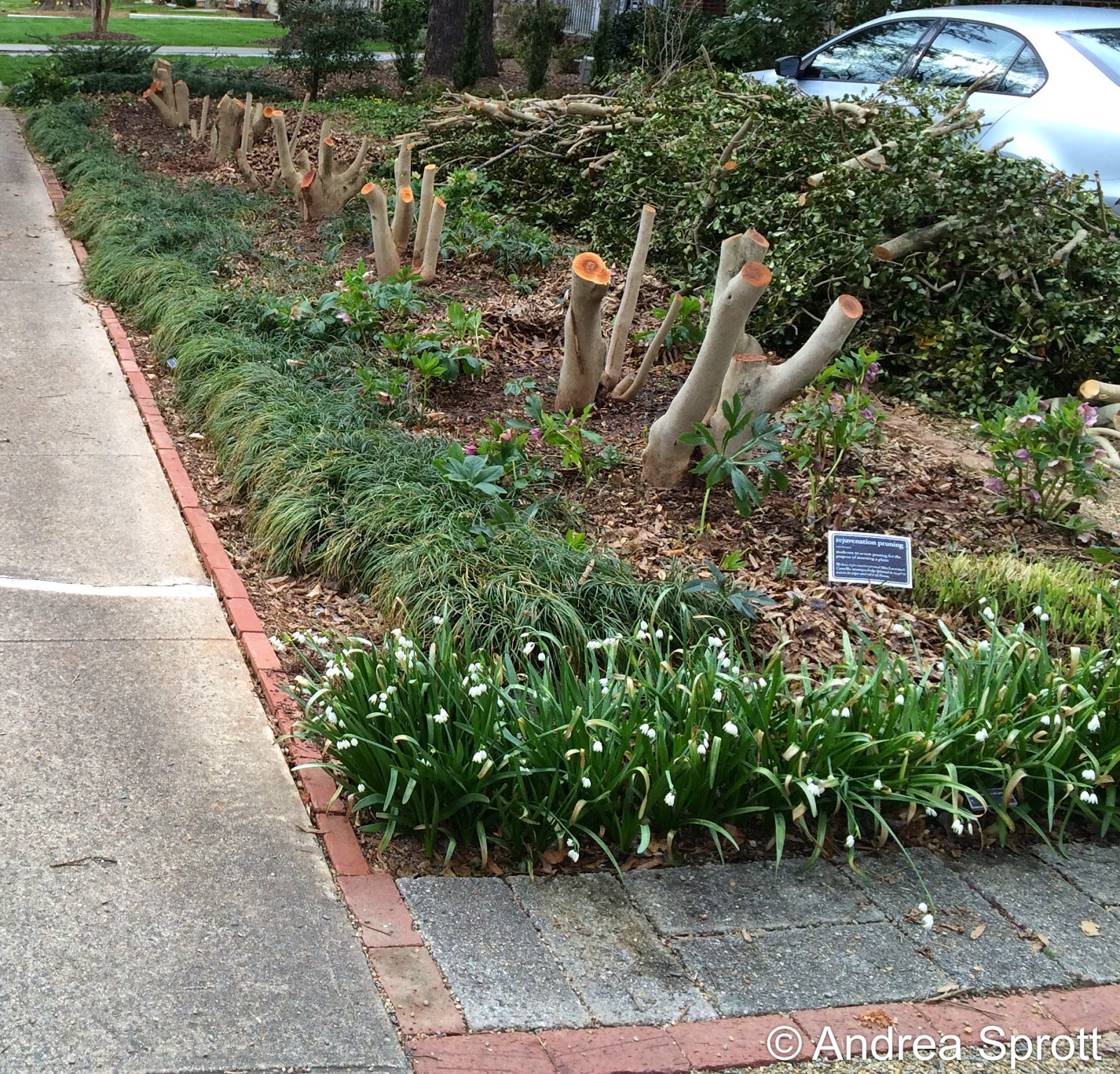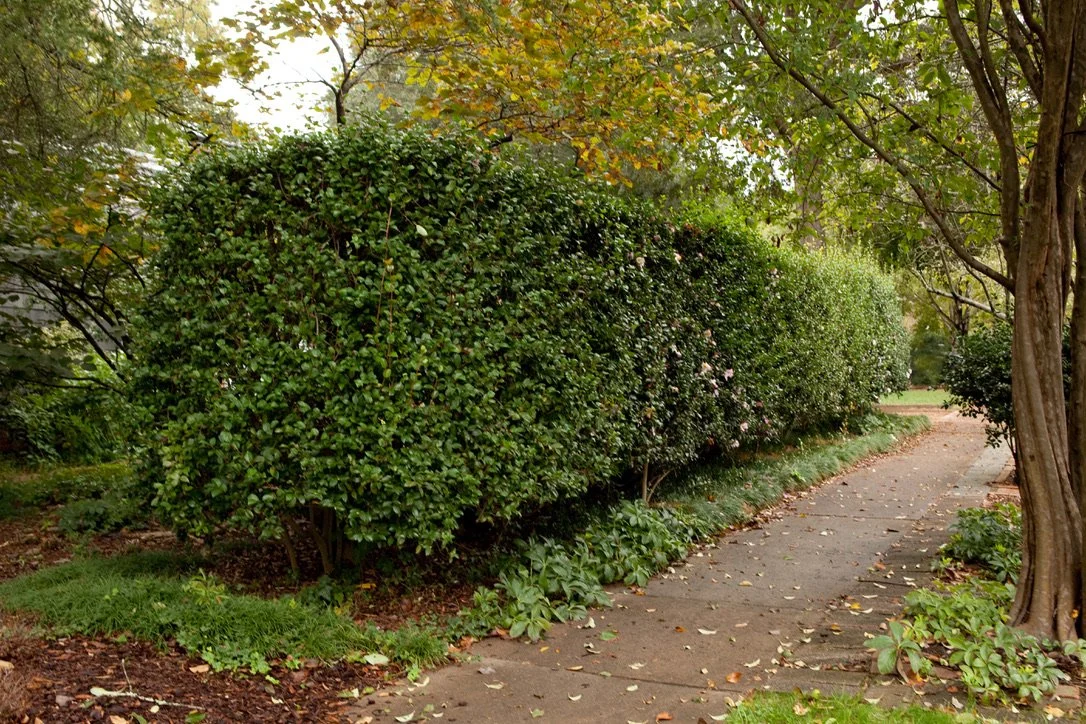For the past four years, I have kept a close eye on Elizabeth Lawrence's Camellia sasanqua hedge at the sidewalk. It has not been uncommon to see evidence of camellia tea scale in the hedge, which had been kept in shape for several years by shearing.
Scale is an insect pest that feeds on plants by piercing plant tissue and sucking sap... literally sucking the life out of a plant. All kinds of scale just love close, dark, humid quarters. In an effort to create a less hospitable environment for it, I thinned out some of the densest parts of the hedge last year. The intention was to increase air circulation and light. While performing an annual plant assessment this winter, I noticed that the scale infestation had gotten quite severe. This was confirmed by local experts and members of the Elizabeth Lawrence garden committee, as well as by my Wing Haven gardening colleagues, Ben, Damou, and Danny. They have been battling scale on the oldest camellias in the Clarksons' garden for years.
Here's what I learned about scale... those nasty little vampiric creatures:
There are several different species of scale. Of course, several species were attacking the entire hedge. Most species of scale were on the leaves (both top and bottom), but a lot were also on the limbs. Not good.
Some species of scale are "easier" to control than others, but none are exactly "easy" to eradicate completely. Oh, fantastic.


So what does a garden curator do in a case like this? What's my main goal here? The most important thing: keep the existing plants as happy and healthy as possible. The garden committee and I kept firmly in mind that most of these plants are nearly 70 years old as we very carefully weighed our options:
LEAST radical: several years (at least) of chemical drenches, periodic spraying and pruning. Net result: may or may not be completely effective. (Ugh)
MORE radical: renovate the hedge by pruning it way back, giving it a chance to regenerate with clean, healthy foliage that can be strategically pruned as it grows. Net result: may or may not kill already weakened plants. (Seems pretty drastic)
MOST radical: remove existing plants and start over. (Can you say "last resort"?!) Net result: total loss of historic integrity in a very prominent spot.
It was not an easy decision. But we are confident it is the best - and definitely most environmentally-friendly - option: renovation pruning. Or, as I like to think of it, pressing the "reset" button. One thing we have on our side: older plants usually respond better to hard pruning; they (hopefully) have well-established root systems that enable quicker regeneration.
So, with chainsaw, loppers, handsaw, etc., in hand, Ben, Damou, Danny and I set to work. In one afternoon, we completed the first pass. It's best to start off a pruning project like this by being a bit conservative with your cuts... you can always prune off more later. And I did.


Sometimes older gardens present difficult situations. Hard decisions must be made. I remain ever-hopeful (crossing my fingers, toes, and nose hairs) that renovating Elizabeth Lawrence's Camellia sasanqua hedge will result in happy, healthy, and relatively scale-free plants.
If I've learned nothing else gardening in Elizabeth Lawrence's footsteps, I now know that I am indeed cruel enough to be a gardener.
Yours in Dirt (and pruning!),
Andrea

